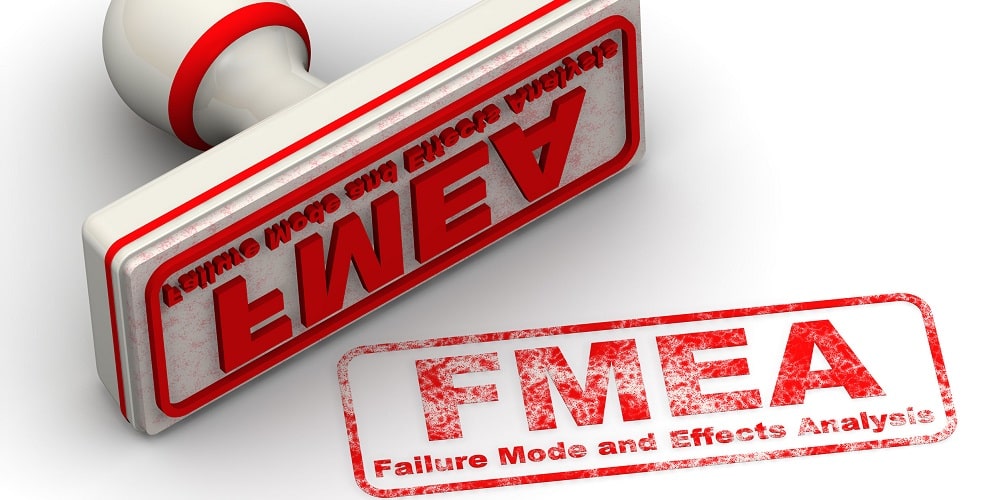Tag: defects

Ensuring Excellence from the Start: The Role of Incoming Goods Inspection
Published:An in-depth look at how IGI can help businesses become more efficient, profitable, and less wasteful by helping managers keep track of incoming good compliance issues while ensuring incoming goods meet quality standards set by the company.
Read more »
Best Practices for Managing Rework in Your Business
Published:Increasing complexity of products and services in combination with the pressure of reduced time to market can increase the probability of non-conformance and the need to perform rework to meet functional requirements. We’ll explain why avoiding rework activities is an all-round winner with some top tips for you to implement it in your business.
Read more »
Key Tools for Defect Reduction in Lean Six Sigma Processes
Updated:Lean Six Sigma is a system that measures how well a process operates, with “six sigma” being the level of perfection in which processes operate at or below 3.4 defects per million units produced. In order to achieve this, companies must eliminate all but the most critical process steps and then re-engineer those remaining steps to be more efficient and effective.
Read more »
Strengthening Business Health: Lot Tolerance Percent Defective as a Vital Tool
Published:It is important in business to have a sampling system in place to determine when to dump a pack of units dumped due to an unacceptable amount being defective. LTPD is part of this sampling system.
Read more »
Understanding Rejectable Quality Level: Key Concepts and Applications
Published:When it comes to sampling plans, there are some terms that are absolutely crucial to be aware of. These are Acceptable Quality Level (AQL), Indifference Quality Level (IQL), and Rejectable Quality Level (RQL).
Read more »
Defect Prevention: Reducing Costs and Enhancing Quality
Published:“Prevention is better than cure” applies to defects in the software development life cycle as well as illnesses in medical science. Defects, as defined by software developers, are variances from a desired attribute. These attributes include complete and correct requirements and specifications as drawn from the desires of potential customers. Thus, defects cause […]
Read more »
Quality Metrics in Focus: Analyzing Defects Per Unit
Updated:Learn how defects per unit is used to understand the quality levels regarding defects, how DPU compares to other yield metrics, and the benefits of regularly measuring the metric.
Read more »
Corrective Action Report (CAR): Accounting and Adapting to Defects
Updated:When defects happen in the manufacturing process, it’s important to correct them as quickly as possible and take action so they don’t occur again. Initiating a Corrective Action Report, or CAR, helps a project manager document the issue and define steps to avoid repeating it.
Read more »
Understanding Poka-Yoke: Eliminating Defects with Proactive Measures
Updated:What is poka-yoke? Have you ever accidentally microwaved your face? No? You’ve never opened the microwave door while it was cooking and accidentally exposed your face to microwave energy? I know that you haven’t because whenever you open the door, the microwave stops running. There is a switch that triggers when the door is opened […]
Read more »
Driving Quality Improvement with DPMO: A Roadmap to Process Excellence
Updated:Lean Six Sigma professionals, much like every other professional, love to talk in acronyms. The acronym of the day is DPMO. Let’s check out what it means.
Read more »
Defects per Opportunity (DPO): Get Context for the Flaws in Your Processes
Updated:Defects per opportunity, or DPO, refers to the number of defects that occur in relation to a given number of opportunities for which an error could occur. Let’s consider some of the benefits of measuring and monitoring DPO.
Read more »
Rolled Throughput Yield (RTY): Make Sure Your Production Is Making the Grade
Updated:What is rolled throughput yield? Your company has just announced that its product line has a 100% total throughput rate, touting it as a great win for everyone. However, from your perspective, you see massive amounts of rework being performed, disrupting the production lines, costing additional money, and impacting on-time delivery. If only there was […]
Read more »
Case Study: Fault Reduction in Cable Industry
Published:In the cable industry, faults (or defects) are often measured by technician visits to a customer’s home to address a problem experienced by that customer. Each such visit typically costs the company in the range of $120 to $150 – not counting the cost of the harm to their brand. Cable Industry Basics Especially problematic […]
Read more »
Should You Calculate Your Process Sigma?
Published:Practitioners must learn when and how to calculate the sigma level of a process. Many people hear about the Six Sigma quality methodology and immediately want to calculate their own process sigma to determine how close (or far) they are from six sigma. My immediate response to them is twofold: Are you currently measuring your […]
Read more »
Case Study: Defection Prevention for Software Development
Published:Everyone knows hindsight is 20/20. A defect prevention strategy in software capitalizes on this idea, analyzing defects encountered in the past and specifying checkpoints and actions to prevent the occurrence of similar defects – and thus, increases in product costs – in the future.
Read more »
Six Sigma Opportunity Counting
Published:Imagine the scenario. Herman and Gary both manage processes for your company. Herman’s process involves a simple matching of supplier invoices to purchase orders. Gary’s process is much more complex. This process involves compliance to government regulations and requires massive amounts of data to be taken, accurately summarized and reported in several different formats to […]
Read more »
Objective Defect Evaluation Leads Improvement Efforts
Published:When no process area is clearly failing, but the drive for continuous improvement remains, practitioners should use an end-effect rating system to determine where to focus efforts.
Read more »
Attribute Agreement Analysis for Defect Databases
Published:A defect database that tracks errors in processes (or even products) – a database that is so sophisticated that it actually tracks where the defect occurred in addition to the type of defect – can provide powerful information. It can be quite helpful in scoping and prioritizing potential improvement opportunities. But is the data trustworthy? […]
Read more »
Lean Six Sigma Can Benefit Drug Discovery/Development
Published:As is true throughout virtually all areas of business across diverse industry sectors, Lean Six Sigma principles and practices applied to research and development (R&D) and product development in the pharmaceutical and biotechnology industries have a dramatic effect on reducing cycle times and the cost of developing new technologies, products, and protocols for research and […]
Read more »
Exploring Defect Containment Metrics in Agile
Published:While Design for Six Sigma (DFSS) and Agile software development seem to have different orientations, there is more linkage than meets the eye. On one hand, DFSS and Agile appear to be at odds: DFSS talks about “stages” and tollgates, which Agile eschews in favor of Lean “single piece” or small batch flow. DFSS talks […]
Read more »
Delight Customers: Reduce Defects in Service Delivery
Published:Telephone operators help establish a company’s image with the outside world. An operator with a clear, courteous voice who is capable of connecting the call to the right person can be a delighter for the caller, as well as the receiver. Recently, a voice of the customer (VOC) survey revealed that operator response at a […]
Read more »
Cost of a Process with Poor Quality Can Be Very High
Published:The definition of quality can differ depending on whether it is associated with products and services or with the processes used to generate them. The quality of a product or service is measured in terms of the satisfaction that the customer derives from using it. The quality of a process depends on its ability to […]
Read more »
Core Set of Effectiveness Metrics for Software and IT
Published:Most software and IT organizations have great difficulty measuring organizational efficiency and effectiveness, despite a bewildering array of metrics that have been proposed and occasionally used. However, a basic-yet-powerful set of metrics that gets to the heart of these issues does exist, and at the same time facilitates the application of Six Sigma. It is […]
Read more »
Measuring and Improving Service Processes with Six Sigma
Published:Service processes play integral roles in almost every company – loan processing in the case of banks, mechanical services in an automobile dealership, recruitment or new employee orientation in a human resources department, accounts payable in an accounting department. Service processes can consume a large portion of a company’s operating margin. So it is not […]
Read more »